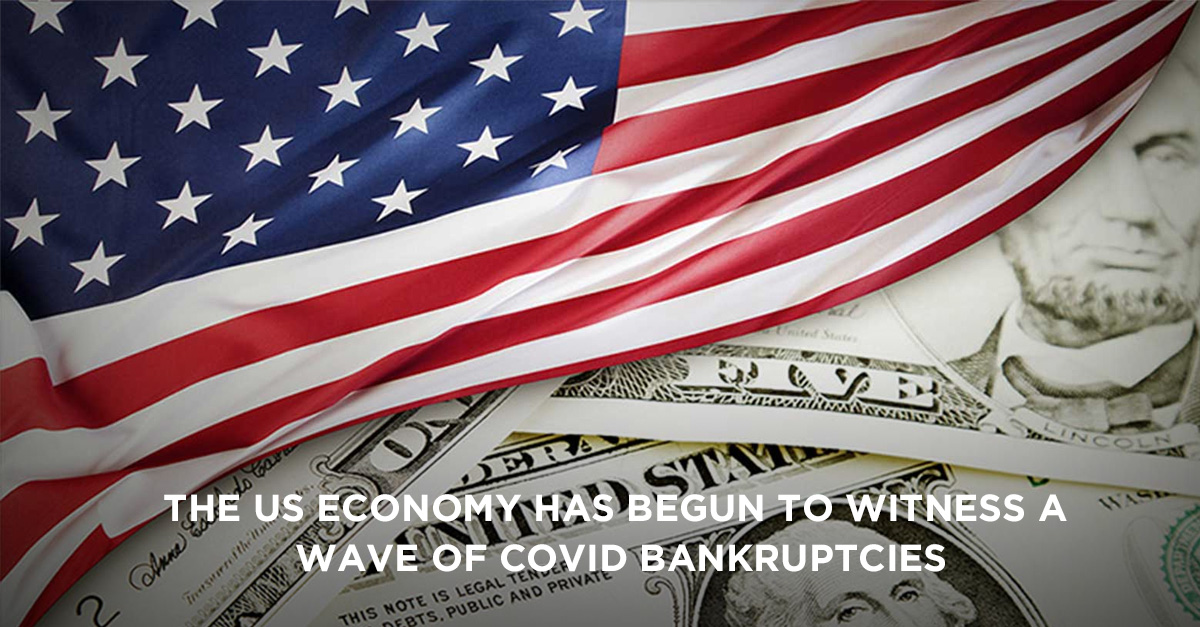The US Economy has begun to witness a wave of Covid Bankruptcies
The US economy, perhaps more so than any other globally, exemplifies consumer-driven growth. The spending habits of the average American account for around 70% of the US Gross Domestic Product(1). This is an economic model that the disruption caused by the COVID-19 pandemic made untenable.
Despite some relief, in the form of government grants and stimulus packages, months of lockdowns and closing down of ‘non-essential’ businesses left several businesses with no choice but to file for bankruptcy. While countless such instances among standalone small outlets can be cited, in virtually every suburb across the US, the lack of business activity stifled many big names as well. Midway through 2020, iconic brands such as JCPenney, Gold’s Gym, Hertz, GNC, Neiman Marcus – and many more – had already filed for Chapter 11 bankruptcy(2). In fact, US court records indicate that such filings were up 20% in 2020. And a new year, as well as a new President at the helm, has not turned back this tide.
The US economy is fundamentally consumption-driven
At the end of WWII, the massive wartime industrial production effort had come to an end. Most industry leaders were left with enormous production lines that no longer had cause to exist. Fearing a recession, and huge unemployment among returning GIs, President Harry Truman pursued the mass production of consumer goods, as the solution to a looming economic crisis. The GI Bill of 1944 assisted veterans in purchasing homes, with down payments and government-guaranteed loans. And labour union’s appeals for increased wages were conceded, to drive ‘the American dream’ which allowed working families in the 1950s to afford white picket fenced homes, gasoline-guzzling cars, and the latest in a new generation of household gadgets and appliances.
In one form or another, the seventy years since that shift, have only further reinforced this consumption-driven economic growth.
New Normal, New Reality
Recent research underscores just how vulnerable this consumption-based American business model is, to a total disruption of the status quo, such as in the wake of COVID-19. In 2020, bankruptcies among entertainment companies nearly quadrupled. The figure tripled within the Oil and Gas sector, doubled for the Information Technology industry, and was up 50% for restaurants, real estate, and retail(3).
However, not everything is gloomy, when it comes to the prospects of the US economy, in 2021. Many economists are looking at the unique parameters of the new normal, as a generational opportunity to drive growth by leveraging the change, which the pandemic has made inevitable. Goldman Sachs has predicted a 7% growth rate for the US economy, in 2021 – which would be the fastest, since President Ronald Reagan won his second term, in 1984(4).
Predicting economic trends is not an easy task. Most experts concede that even the most astute economic assessments can prove to be wildly off the mark, because a single parameter has been either ignored, or not accounted for sufficiently. For now, the safest statement to make is that, as is the case for any crisis, the COVID-19 pandemic has led to both opportunities and risks, for the US economy. One thing is for sure, those that are willing to adapt to the new normal have a chance to grow, while inflexible legacy operations could be swept away in the churn.
- https://www.marketplace.org/2020/04/06/whats-gonna-happen-to-the-consumer-economy/
- https://www.nbcnews.com/business/consumer/which-major-retail-companies-have-filed-bankruptcy-coronavirus-pandemic-hit-n1207866
- https://www.washingtonpost.com/business/2021/02/26/pandemic-economy-bankruptcies/
- https://www.washingtonpost.com/business/2021/02/20/economy-growth-pandemic/




